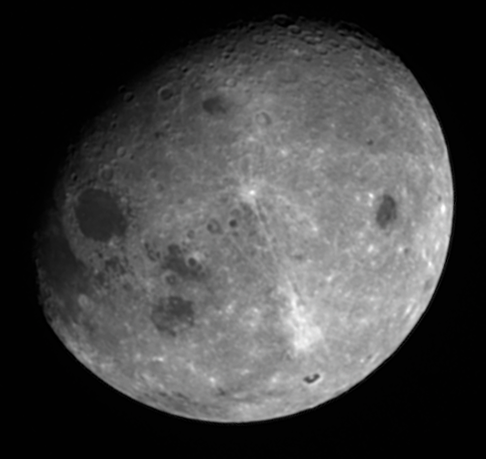
A color portrait of the Earth and the Moon taken Oct. 2, 2017 at a distance of approximately 3,180,000 miles (5,120,000 km) from Earth, using OSIRIS-REx’s MapCam imager. To produce the image, three of MapCam’s color filters (blue, green and red) were co-registered and stacked. Color correction and “stretching” (brightening) were performed on the Earth and Moon. Credit: NASA/Goddard/University of Arizona
This color composite image of Earth and the Moon was taken Oct. 2, 2017 (ten days after OSIRIS-REx performed its Earth Gravity Assist maneuver), using MapCam, the mid-range scientific camera onboard the spacecraft. The distance to Earth was approximately 3,180,000 miles (5,120,000 km)—or about 13 times the distance between the Earth and Moon.
MapCam, part of the OSIRIS-REx Camera Suite (OCAMS) operated by the University of Arizona, has four color filters. To produce this image, three of them (b, v and w) were treated as a blue-green-red triplet, co-registered and stacked. The Earth and Moon were each color-corrected, and the Moon was “stretched” (brightened) to make it more easily visible.
To capture the image, OSIRIS-REx pointed its instrument deck back toward Earth from a distance of approximately 3,180,000 miles (5,120,000 km). At that range, the Moon—which was 3,370,000 miles (5,420,000 km) away from the spacecraft—appeared just inside MapCam’s field of view, allowing both planetary bodies to be captured in the same frame.


